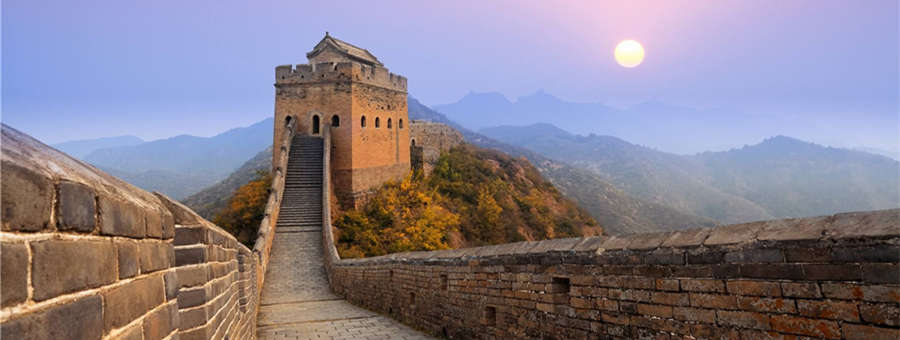The 13 best places to visit the Great Wall of China include 1) Mutianyu, 2) Jinshanling, 3) Simatai, 4) Badaling, 5) Jiankou, 6) Gubeikou, 7) Juyongguan, 8) Huangyaguan, 9), Huanghuacheng 10) Shanhai Pass 11) Jiayuguan, 12) the Han Dynasty Great Wall, 13) China Southern Great Wall.
When you think of the Great Wall of China, you think one of mankind’s most incredible architectures and greatest ancient engineering achievements. It was first built during the Spring and Autumn Period and the Warring States Period (770BC-221BC). After Emperor Qinshihuang in the Qin Dynasty unified China, the Great Wall was expanded massively to prevent the northern nomads from invading the central plains. The existing Great Wall with a total length of 6,700 kilometers was mainly built in the Ming Dynasty (1368-1644). It traverses 15 provinces, municipalities and autonomous regions, including Hebei, Beijing, Inner Mongolia, Shanxi, Shaanxi, Ningxia, Gansu, and Xinjiang. So which part of the great wall is best to visit?
1. Mutianyu - the best restored and essence of the Ming Dynasty Great Wall
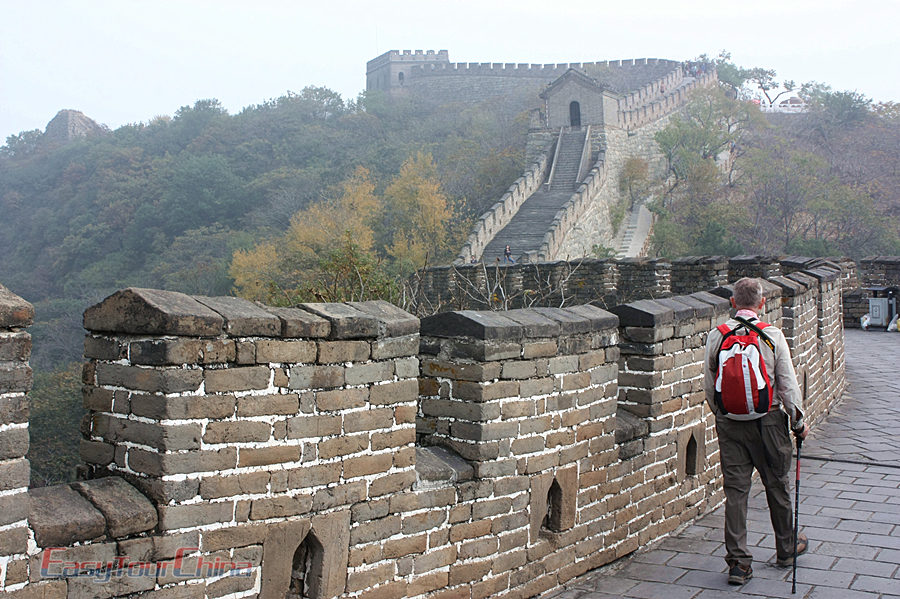
China's longest Great Wall, the Mutianyu Great Wall, is located in Huairou District of Beijing, 73 kilometres from the city. The Mutianyu Great Wall was built in the first year of the Ming Dynasty (1368) by Xu Da, a general under the Emperor Zhu Yuanzhang, who supervised the construction of the Great Wall on the site of the Northern Qi Great Wall.
The Mutianyu Great Wall is the essence of the Great Wall of the Ming Dynasty, connecting to the Gubeikou in the east and Juyongguan in the west.
The most popular section of the Great Wall among foreign travelers, Mutianyu looks magnificent, with 35 exquisite watch towers and fortresse scattered on the 5400-m wall.
- Location: in Hairou area, 73km from downtown Beijing
- Connecting with Juyongguan Pass and Gubeikou
- Highlights & Activities: cable car, toboggan, hiking, sightseeing
- Suitable for: everyone, including family with kids
- Recommended Tour: Private Beijing Great Wall Day Tour (Different Parts Available)
2. Jinshanling- celebrated as the most beautiful Great Wall
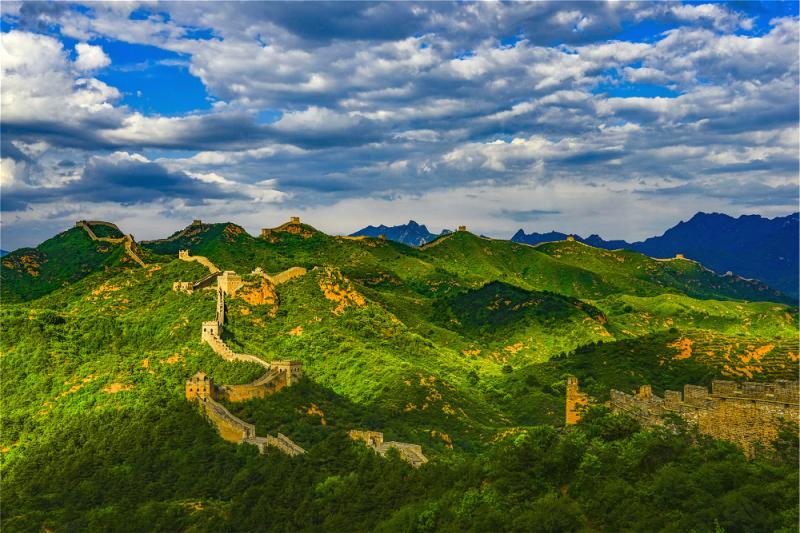
The Jinshanling Great Wall is 130 kilometres from Beijing and 90 kilometres from Chengde. The Jinshanling Great Wall was built under the auspices of Qi Jiguang, a patriotic general of the Ming Dynasty.
One of the best places to see the Great Wall of China, it is famous for its dense enemy towers, peculiar landscape, exquisite architectural art, sound military defence system that is well-preserved today. The Jinshanling Great Wall starts from Longyukou in the west to Wangjinglou in the east.
Semi-restored and semi-wild, Jinshanling is inspirational and features the most popular hiking trails of the Great Wall. There are 67 watchtowers, 2 beacon towers and 5 fortresses. Jinshanling is also the best place for the Great Wall photography.
- Location: in Miyun County, 130km from downtown Beijing
- Connecting with Longyukou Pass and Wangjinlou Pass
- Highlights & Activities: hiking, photography
- Suitable for: hiking lovers and photography enthusiasts, honeymooners who wish to see the Great Wall sunrise
- Recommended Beijing Tour: 3-day Great Wall Trekking with Camping Tour
3. Simatai - The wide, authentic Great Wall featuring night tour
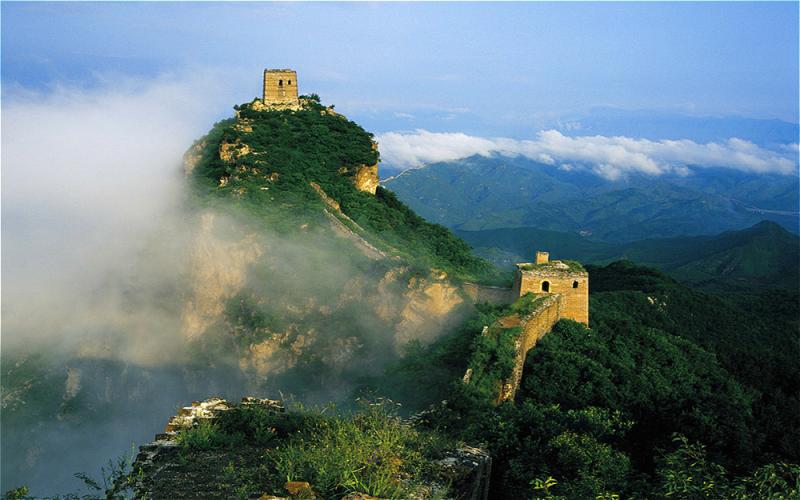
Simatai Great Wall is located in Gubeikou Town, Beijing, with a total length of 5.4 kilometres and 35 enemy towers. Due to its special topographical conditions and the wisdom of the builders, Simatai Great Wall runs along with the blade-like ridges, and the beacon towers, enemy towers and barricades vary within a short distance, making it one of the best places to see the Great Wall of China.
The only the Great wall that retains its original appearance of Ming Dynasty, Simatai is steep, precipitous and elaborately designed. In 2012, Simatai was named "the top 25 must-see sights in the world" by The Times.
- Location: in Miyun County, 120km from downtown Beijing
- Connecting with Wangjinglou Tower and Houchuankou Pass
- Highlights & Activities: hiking, sunset, night tour
- Suitable for: hiking lovers, family with kids
- Recommended Tour: 3-day Classic Beijing and Simatai Great Wall Night Tour
4. Badaling – the best-preserved but most crowed Great Wall
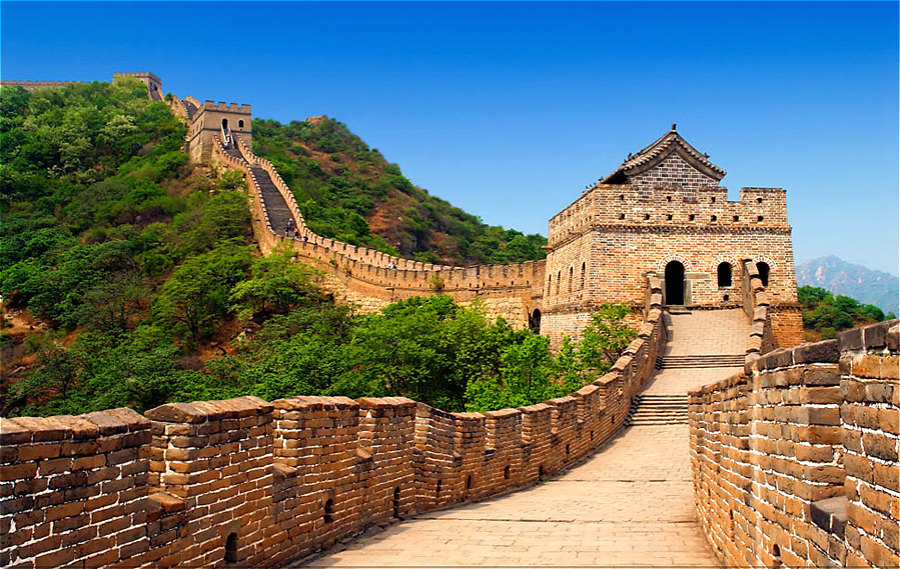
It has always been a place of contention for military strategists and an important barrier for the capital Beijing. So far, more than 300 celebrities including Richard Nixon and Margaret Thatcher have visited here.
The Badaling Great Wall is the earliest section of the Ming Great Wall opened to visitors, and is also the most visited and crowded Great Wall of China.
- Location: in Yanqing, 72km from downtown Beijing
- Connecting with Juyongguan Pass
- Highlights & Activities: cable car, sightseeing
- Suitable for: everyone, including seniors and wheelchair-users
- Recommended Tour: Great Wall of China Helicopter Tour
5. Jiankou – one of the steepest, most authentic and wildest Great Wall
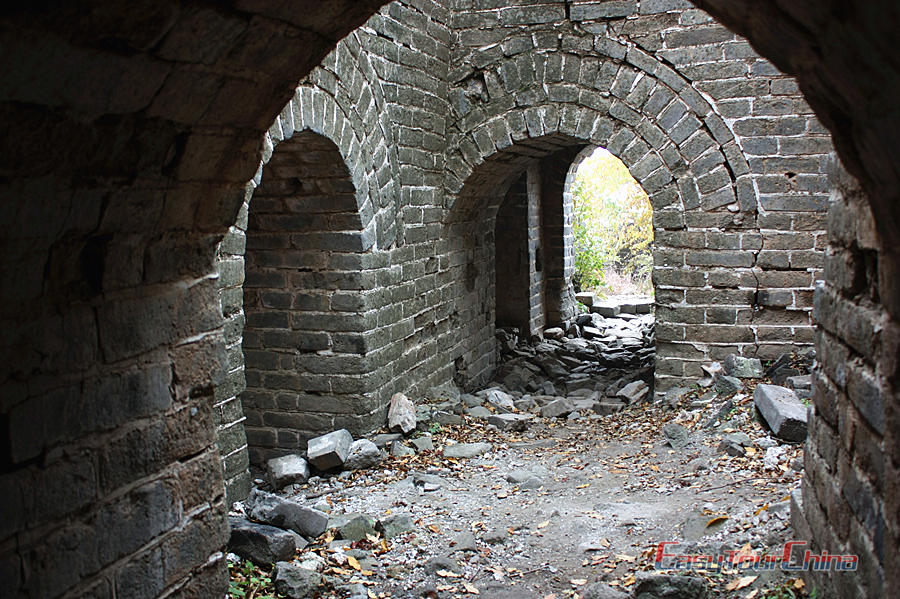
Jiankou Great Wall is so named because the whole section is winding in W shape, like a bow-buckle arrow – a majestic arrow built on the perilous peaks and cliffs. Today it has been weathered and eroded without being restored. Jiankou is also an iconic image of the Great Wall, and one of the best sections to hike the Great Wall of China.
Jinkou Great Wall is one of the most famous and dangerous sections of the Great Wall of China during the Ming Dynasty, and has always been a hot spot for Great Wall photography. With severe natural weathering and no artificial modifications, you can enjoy the authenticity and ancient landscape of the Great Wall.
- Location: in Huairou District, 100km from downtown Beijing
- Connecting with Mutianyu
- Highlights & Activities: hiking, trekking, photography
- Suitable for: hikers and adventurers
- Recommended Tour: 7-day Wild Great Wall of China Hiking Tour
6. Gubeikou – an ancient military fortress with the most complete system of the Great Wall
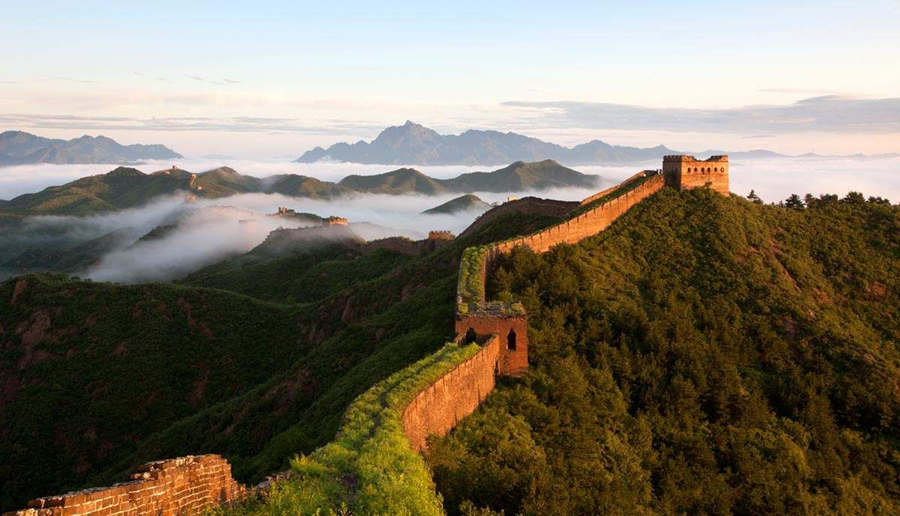
In the history of the Great Wall of China construction, the Gubeikou Great Wall is the most comprehensive. It consists of the Northern Qi Great Wall and the Ming Great Wall together, and includes four sections: Wolhu Mountain, Panglong Mountain, Jinshanling and Simatai.
Gubeikou was the fortress of the Great Wall between Shanhaiguan and Juyongguan, and it was the throat of the Liaodong plain and Inner Mongolia to the central Plains. It was always the place that was contested by the warlords. Especially in the Liao, Jin, Yuan, Ming and Qing dynasties, the battles happened in Gubeikou were never stopped.
- Location: Luanping County, Chengde City, 146km from Beijing
- Consists of Wohushan, Panlongshan, Jinshanling and Simatai
- Highlights & Activities: hiking, trekking
- Suitable for: hikers and adventurers
- Recommended Tour: 3-day Great Wall Trekking with Camping Tour
7. Huangyaguan – the Great Wall Marathon
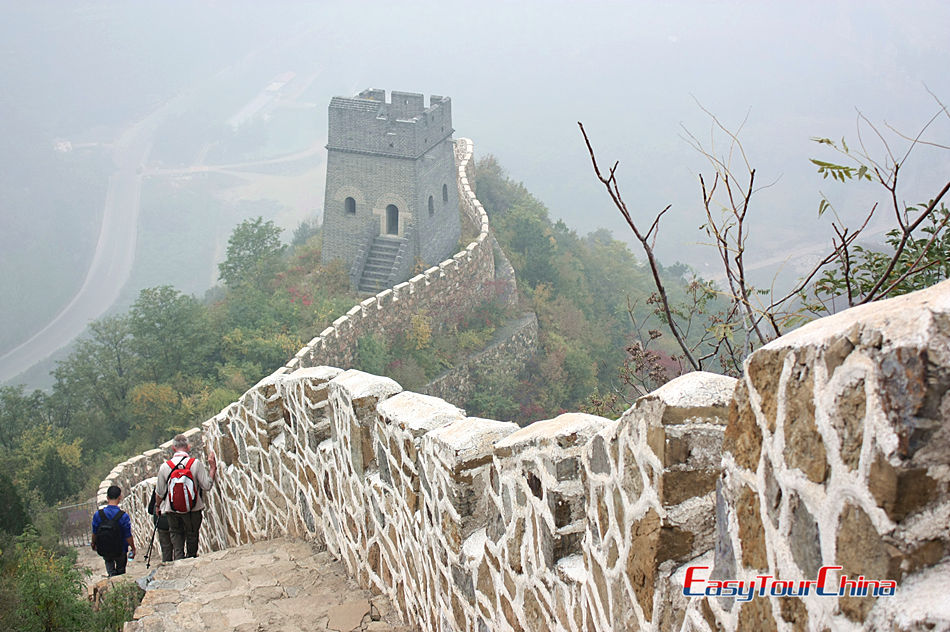
Founded in 1999, the Huangyaguan Great Wall International Marathon is honored as "one of the world's 10 coolest Marathons" and also one of the 10 must-run events selected by the US media. While experiencing the race, participants can also take in beautiful views and experience the vicissitudes of the Great Wall.
- Location: 28km north of jizhou District, Tianjin
- Highlights & Activities: sightseeing
- Suitable for: everyone
- Recommended Tour: 7-day Great Wall Hiking Tour from Huangyaguan to Mutianyu
8. Juyongguan – one of the most important forts of the Great Wall
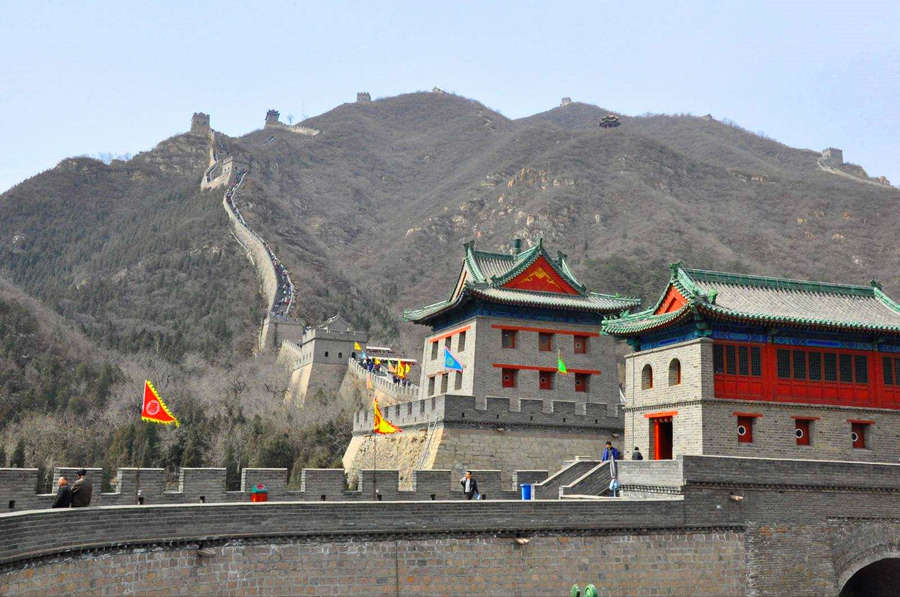
Juyongguan is the gateway into Beijing from the north. The highlights of visiting Juyong Pass are the tall and majestic Guancheng and its rolling crenel, as well as the exquisite stone carvings of Yuntai.
Juyong Pass is one of the four important passes, which are Nankou, Juyongguan, Shangguan and Badaling.
- Location: Changping District, 60km from Beijing
- Highlights & Activities: sightseeing
- Suitable for: everyone
9. Huanghuacheng – the Great Wall emerges from water
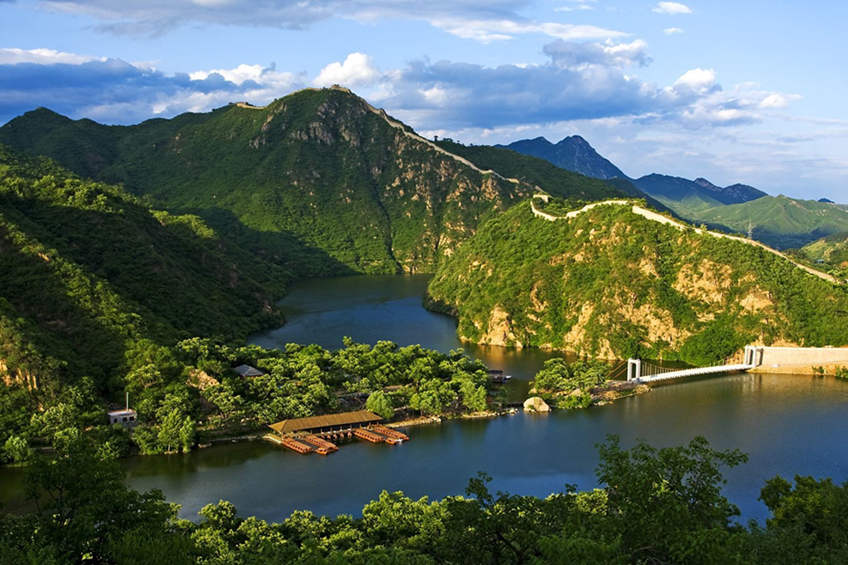
The Huanghuacheng Great Wall, built in 1404 during the Yongle period of the Ming Dynasty, is the only one in Beijing where the Great Wall is connected with water. Therefore, it is also one of the best places to visit the Great Wall of China. Three parts of the wall traverses the water. Huanghuacheng not only guards the north gate of the capital, but also serves as an important gateway for guarding the Ming Tombs.
Away from the bustle of the city, you may take in the views of the mountains and lakes as well as the Great Wall's grandeur.
- Location: Jiuduhe Town, Huairou District, 65km of downtown Beijing
- Connecting with Mutianyu
- Highlights & Activities: sightseeing, hiking, camping, boat cruise
- Suitable for: everyone
10. Shanhai Pass – where the Great Wall meets the sea
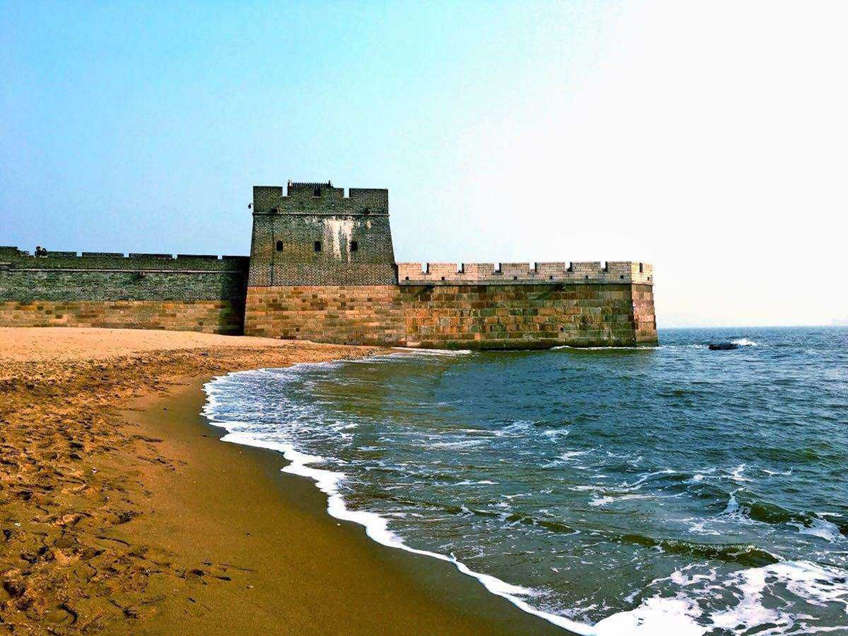
In the 14th year of Ming Dynasty (1381), Emperor Taizu ordered to build the Shanhai Pass, which became a military town with a stronghold in Northeast and North China. Shanhaiguan has the reputation of “the first pass in the world”, one of the best places to visit the Great Wall of China.
It was thought to be the east end of the Great Wall until 1990 when Hushan (Tiger Mountain) Great Wall in Dandong City, Liaoning Province was identified as the east terminal.
- Location: 15km northeast of Qinhuangdao, Hebei
- Connecting with Old Dragon's Head
- Highlights & Activities: sightseeing, hiking, camping, boat cruise
- Suitable for: everyone
11. Jiayuguan - celebrated as the greatest fort under heaven
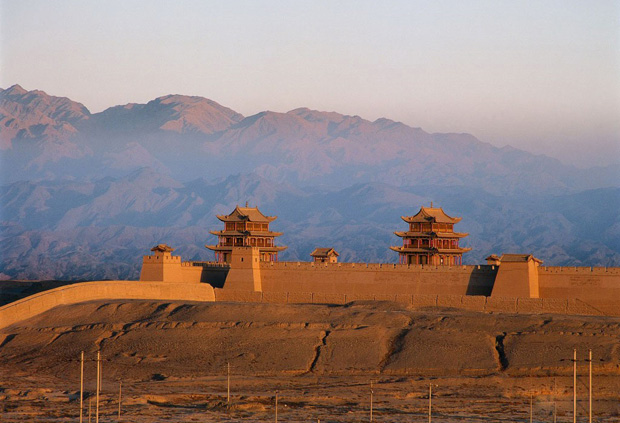
Jiayuguan Pass was built in the fifth year of Ming Dynasty Hongwu (1372), and consists of inner city, outer city, castle, urns, trenches and the Great Wall, with a total length of about 60 kilometres. It is connected to the Hanging Great Wall in the north and the First Pier in the World in the south.
The west end of the Great Wall, JIayuguan is also a historical site of the Silk Road, with the walls traversing the wild gobi desert, offering an exotic sense of ruin and desolation.
- Location: 5km west of Jiayuguan City, Gansu Province
- Highlights & Activities: sightseeing
- Suitable for: everyone
- Recommended Silk Road Tour to Jianyuguan: 10-day Silk Road & Badain Jaran Desert Tour
12. The Han Dynasty Great Wall
A Great Wall was built in Han Dynasty and stretched over 10,000 kilometers from Lop Nur, Xinjiang in the west, to the territory of the People's Republic of Mongolia in the north, and to the southeast of Jilin Province in the east, longer than the Ming Dynasty. It used trenches or natural terrain as a barrier, made up of beacon towers, castles, pavilions, and other fortifications. Through 2000 years of erosion, sand burial and human destruction, most of the Great Wall of Han Dynasty has been destroyed.
13. The South Great Wall of China
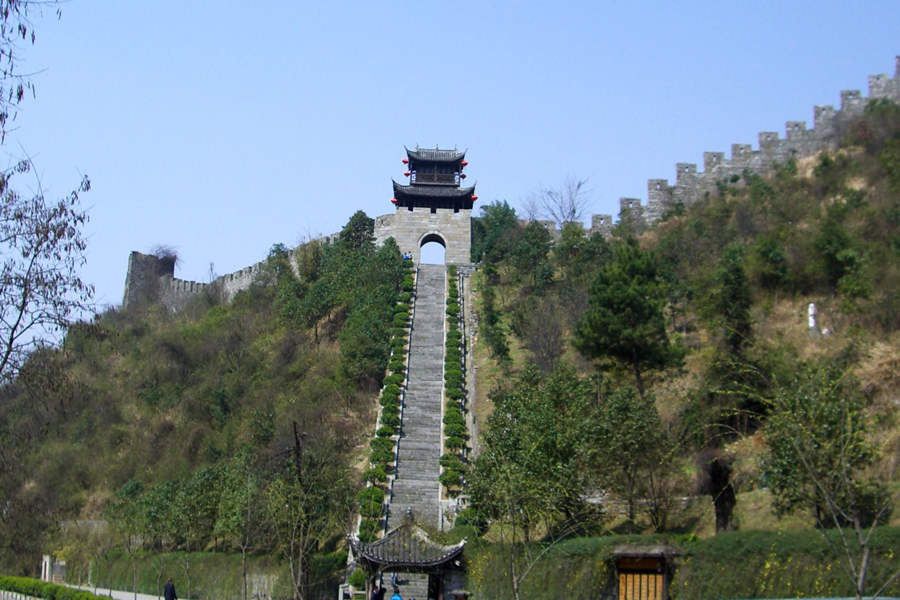
With a total length of more than 200km, it is also known as the Great Wall in the Miao nationality’ region. The South China Great Wall is an significant site to study the history how the rulers of the Ming and Qing dynasties conquest the remote ethnic minority.
- Location: Fenghuang County, Tujia-Miao Autonomous Prefecture, West Hunan Province
- Suitable for: history and culture lovers
- Recommended Tour:16-day China Great Wall Panorama Tour
